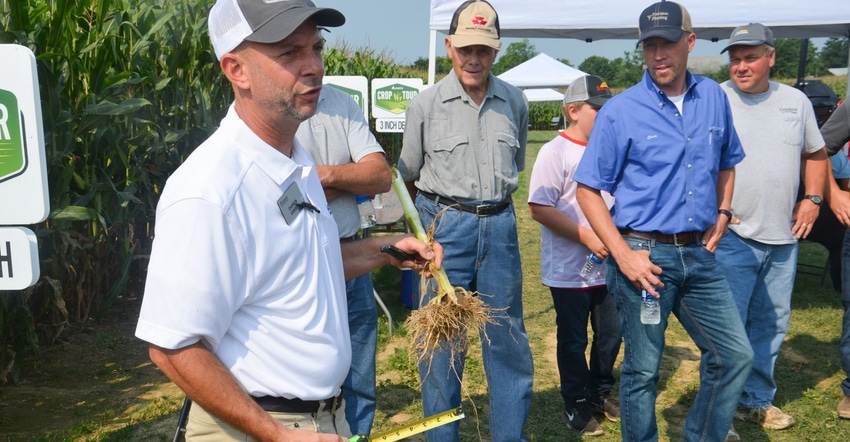
Maybe you found more stalks that appeared to emerge late than you expected during corn harvest. You selected 2 inches as your target planting depth. Surely planting depth wasn’t an issue.
Don’t be so sure, says Darren Goebel, director of global agronomy and farm solutions for Agco. It’s possible that due to wear or other factors, even if you set each row to plant 2 inches deep, the seed in every row didn’t wind up 2 inches deep. It’s also possible that depending upon your tillage system, actual depth may have varied from target depth.
“We sometimes see in conventional tillage that with the soil fluffed up after planting, you may have the planter set at 2 inches and you think you’re planting 2 inches deep, but you’re really only planting an inch and a half deep,” Goebel explains.
He cites a case where a customer planted a cornfield with two planters, both supposedly set at a 2-inch planting depth. There was enough difference in emergence and growth that it showed up in aerial images during the season. It also showed up in less yield for the shallow-planted corn.
“The farmer thought there was some other problem with the planter, but it turned out that one planter was actually set to plant an inch and one-half deep. The setting was wrong, not the planter,” he says.
There’s still time to check planting depth if you haven’t tilled the field, Goebel says. Dig up a few stalks and locate the seed, or where it was. Measure to the first root above it, and then add three-fourths of an inch to account for the hypocotyl root. That gives you the planting depth.
About the Author(s)
You May Also Like




